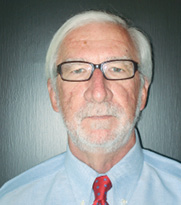Nearly 40 years ago, I was hired by a consulting firm whose major client was International Harvester, the once venerable leader in agricultural equipment sales. This consulting firm had designed the XL program for IH that recognized and rewarded their dealer organization for implementing a series of sensible, yet stringent, operational and financial standards. The same firm conceived and implemented a training program for the IH dealer organization that was then perceived as cutting edge.
Although IH had been losing its dominance for years in the market place, as documented by Barbara Marsh in her 1985 book entitled “A Corporate Tragedy: The Agony of International Harvester,” the hiring of senior management with no direct industry experience proved to be the company’s denouement. Rather than developing a coherent strategy that would take advantage of the inherent synergies throughout their six functional entities, upper management focused on cutting costs, which in turn incensed the labor unions who subsequently went out on strike.
After initially playing hardball with the unions, the company ultimately caved in to their demands just as the prosperous ‘70s were coming to a screeching halt. Defying their economic planners, management then ordered production be ramped up and that machines be shipped to dealers. With interest rates approaching 21% and the farm economy in a tailspin not seen since the Great Depression, International Harvester became a “dead man walking.”
At about the same time that IH employees went out on strike, I left the consulting firm to pursue a doctorate degree at West Virginia University. Three years later, while on staff at WVU, I was contacted by the former owner of the aforementioned consulting firm asking if I was interested in doing some consulting. A former executive at IH, who had moved on to Massey Ferguson, retained us to write a strategic plan for the company and to subsequently put together a training program for his dealer organization.
After training 600 of their dealers, our professional relationship with MF came to an end when their board hired two individuals with financial backgrounds to take over the management of the company. One of their first decisions was to split off the combine division into a separate entity. This “financial engineering” eventually led to the bankruptcy of the combine division that in turn led to the demise of many combine dealers, which in turn ultimately led to the sale of the company to AGCO Corp.
At the same time that MF was imploding, we were retained by Case IH to initiate a training program for their combined dealer organization. The Ag Division of International Harvester had been recently acquired by the Tenneco conglomerate that had been marketing ag tractors under the brand name of Case. Over the next 5 years, we trained over 900 dealers and company store managers on five continents. In 1994, Tenneco split off the agricultural and construction equipment divisions into a separate entity and then sold their shares to the public, presumably after a succession of top management changes had failed to produce the requisite results.
“Had CAT purchased Case IH when it was available, there would be a new ‘sheriff’ in town today…”
In 1998 the now publicly traded Case Corp. was acquired by Fiat Corp., which had previously purchased the Ford-New Holland brand several years earlier. Following the philosophy of Jack Welch, who had long advocated exiting a business if a first or second place position in an industry was unattainable, Fiat’s purchase would put them in a strong competitive position to challenge the perennial leader. While one can debate the efficacy of their “dual brand, dual distribution” strategy, one cannot dispute the fact that the purchase did indeed significantly increase Fiat’s worldwide ag sales.
Also in 1998, I trained over 50 Caterpillar dealers on the nuances of managing an agricultural equipment dealership. At the conclusion of the training, I stated that Caterpillar would be out of the agricultural equipment business within 5 years. This observation was predicated on three factors. First and foremost, the overwhelming number of their dealers had no passion for the sale of ag equipment. Second, while many of the CAT dealers had done an acceptable job of selling a new tractor, they were not as successful in purchasing and selling the used unit. And third, CAT would not be able to continue in the marketplace with the narrow product line that it offered.
As a result, to be successful in the ag equipment industry, Caterpillar would have to either buy an additional company with a full line of products or they would have to develop strategic alliances with a series of specialty shortline companies. Doing neither, 3 years after my training and 2 years sooner than I predicted, they sold the Challenger line to AGCO. Had they purchased the Case IH brand when it was available, however, I believe there is a strong likelihood that there would be a new “sheriff” in town today.
To be continued!







